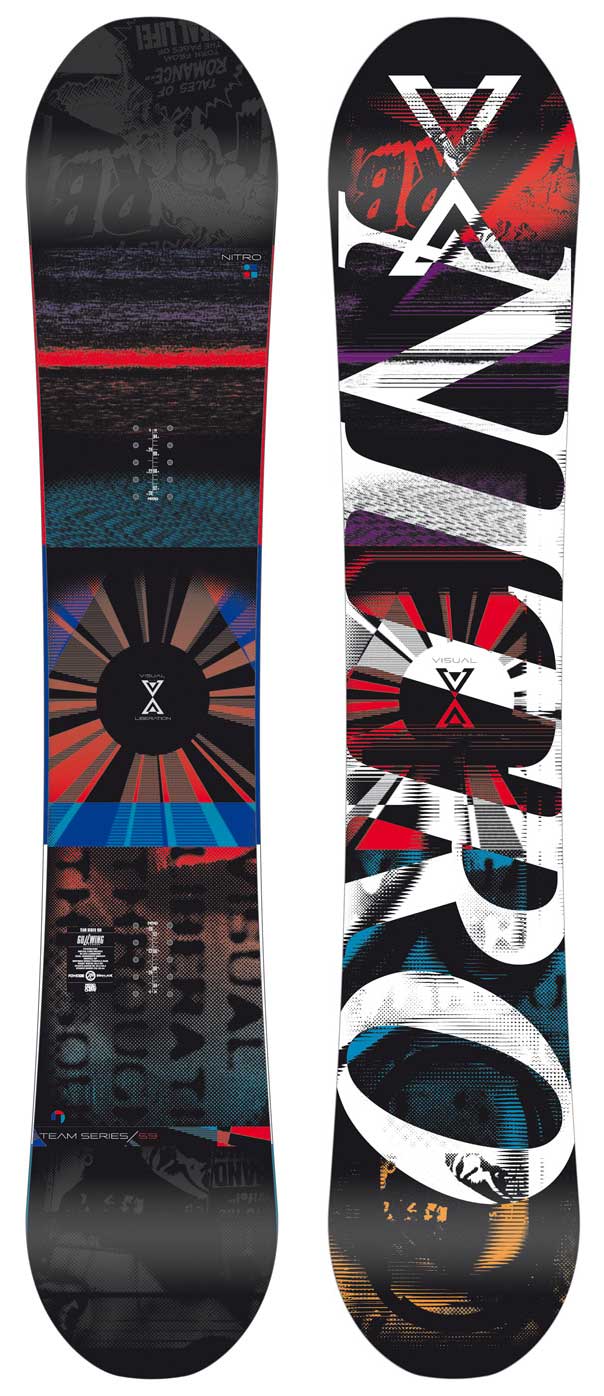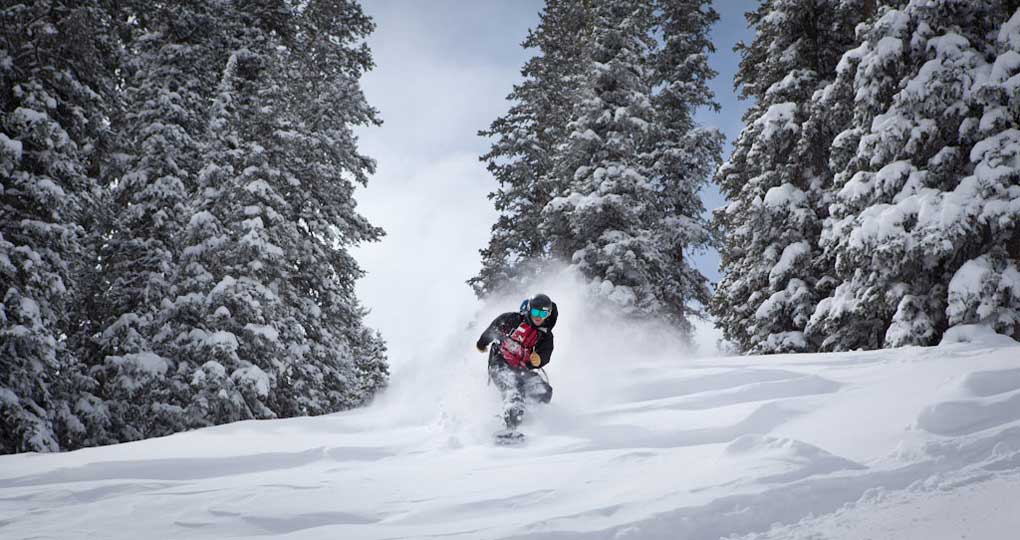 Board: 2011-2012 Nitro Team Gullwing, 159cm
Board: 2011-2012 Nitro Team Gullwing, 159cm
Waist Width (mm): 252
Nose and Tail Width (mm): 294
Effective Edge (cm): 122.0
Sidecut Depth (tip / mid / tail): 11.7 / 7.3 / 11.7 meters
Shape: Dual-degressive directional twin
Stance Range (cm): 52-64
Stance Location (cm): -3.0 on the back; +12 on the front
Boots / Bindings: Flow Rift Quickfits boots / Flow NNXT-ATSE Bindings
Test Locations: Taos Ski Valley
Days Ridden: 18
When I pulled the Nitro Team Gullwing out of the shipping box, the first words out of my mouth were, “Wow…. Is it broken?”
The board seemed normal at the tip and tail, but the way the middle was bent had me wondering if it had been damaged somehow during shipping. I knew that the Gullwing design incorporated a serious amount of reverse camber in the center, but the shape was more exaggerated than I expected.
To compensate for the reverse camber in the center, the Team Gullwing has traditional camber under the foot placements on the nose and tail. Nitro describes this “Gullwing camber” as relieving the pressure from the contacts points and providing a loose ride, “like a skateboard with loose trucks.” Plus, they say, “The positive cambers under each binding maintain response toward tip and tail once pressure is applied to keep a controlled snap and pop when you need it.”

Nitro’s “Powercore,” a tip-to-tail core of poplar with biaxial fiberglass laminates, also aids in pop, which I experienced jumping a log on the run-out of Kirby’s at Taos. This thing was nearly effortless to raise up over a rope—er, log. From there I made my way down some choppy groomers to experience the board’s playfulness, and the pop seemed snappy, powerful, and confident.
I continued down off rollers and nubs making my way to lift 7, and let’s just say I did a bunch of grabs I haven’t done in a very long time. I felt that I had more hang time off features that I’ve been hitting for quite a while. Maybe this was because I actually had more hang time? Possibly the fun nature and excellent pop of the Gullwing? I believe it was a combination of both.
The Gullwing shape also meant I had very few and minor tip and tail hang ups, and the board spun nice and smooth. I felt very comfortable riding switch, and even in powder the board felt responsive and quick to slash around side to side. The 2012-2013 Team Gullwing also has Nitro’s “Reflex Profile,” a thinner core profile between your feet that they claim improves torsional flex, handling, and ease of steering. Pretty much the Team Gullwing rode like a park board with a stiffer focus for attacking more of the mountain.

The effectiveness of the Gullwing shape is that the board doesn’t grab when you don’t want it to, which makes it an excellent choice and a really fun board in certain conditions and playful riding styles. Not surprisingly, then, the flip side of this is that the Gullwing doesn’t perform as well when you do want some bite, like when you’re trying to scrub speed. It was quick to chatter out.

Hi Justin Bobb,
First good review I’ve found on the web, finally!! I just have a few questions.
I’m seriously looking into buying one of these, Im an intermediate rider and currently riding a stiff old Burton Mayhem 158 from 2010, which I’m pretty bored of. I was wondering if this would be a suitable upgrade? I want a playful all mountain stick, capable of buttering/ pissing around, but also capable of handling powder well. What is the flex like on this board?
I’m guessing this is Nitro’s version of the Burton Process (or Custom?) Flying-V or Ride’s new Berzerker, from your experience how does it compare to these, as these are my other options.
Also would it be ok to team this board up with my Burton Mission bindings?
Thanks for your help
Anthony